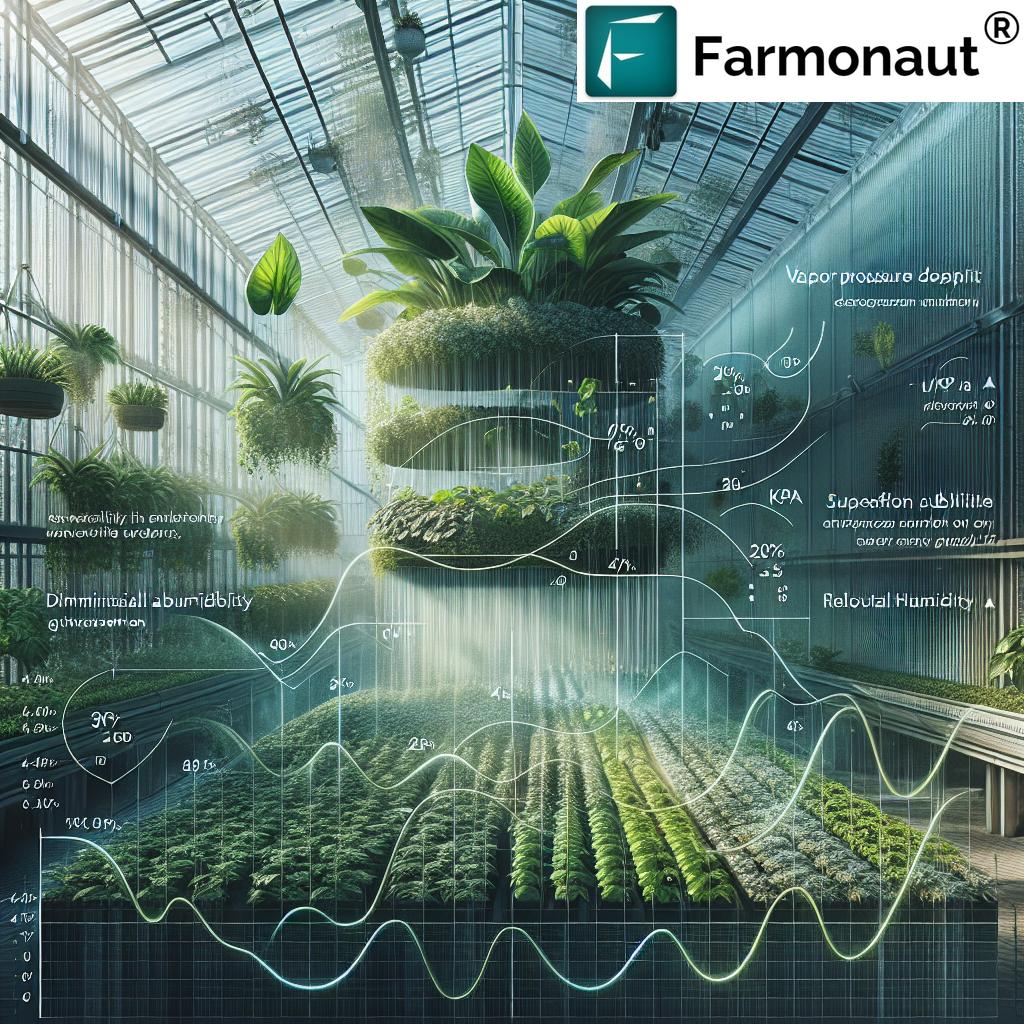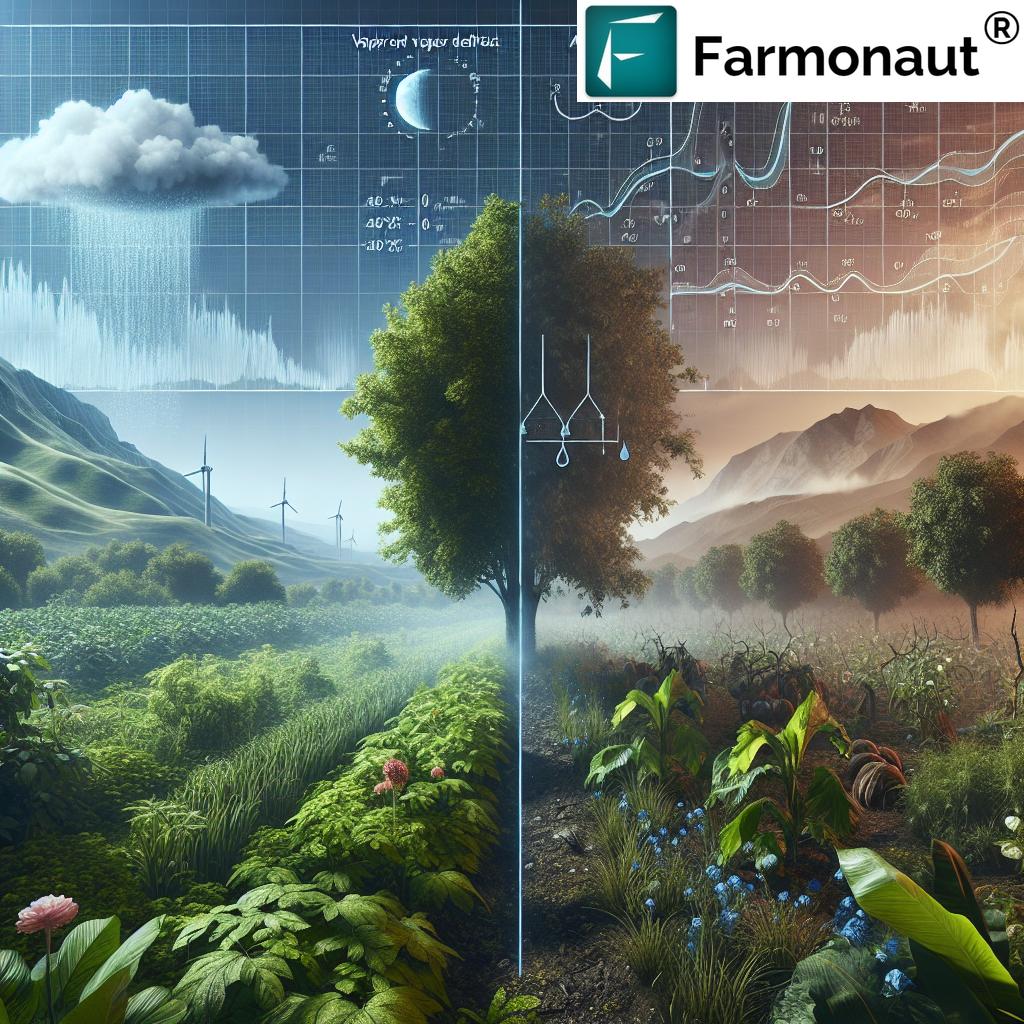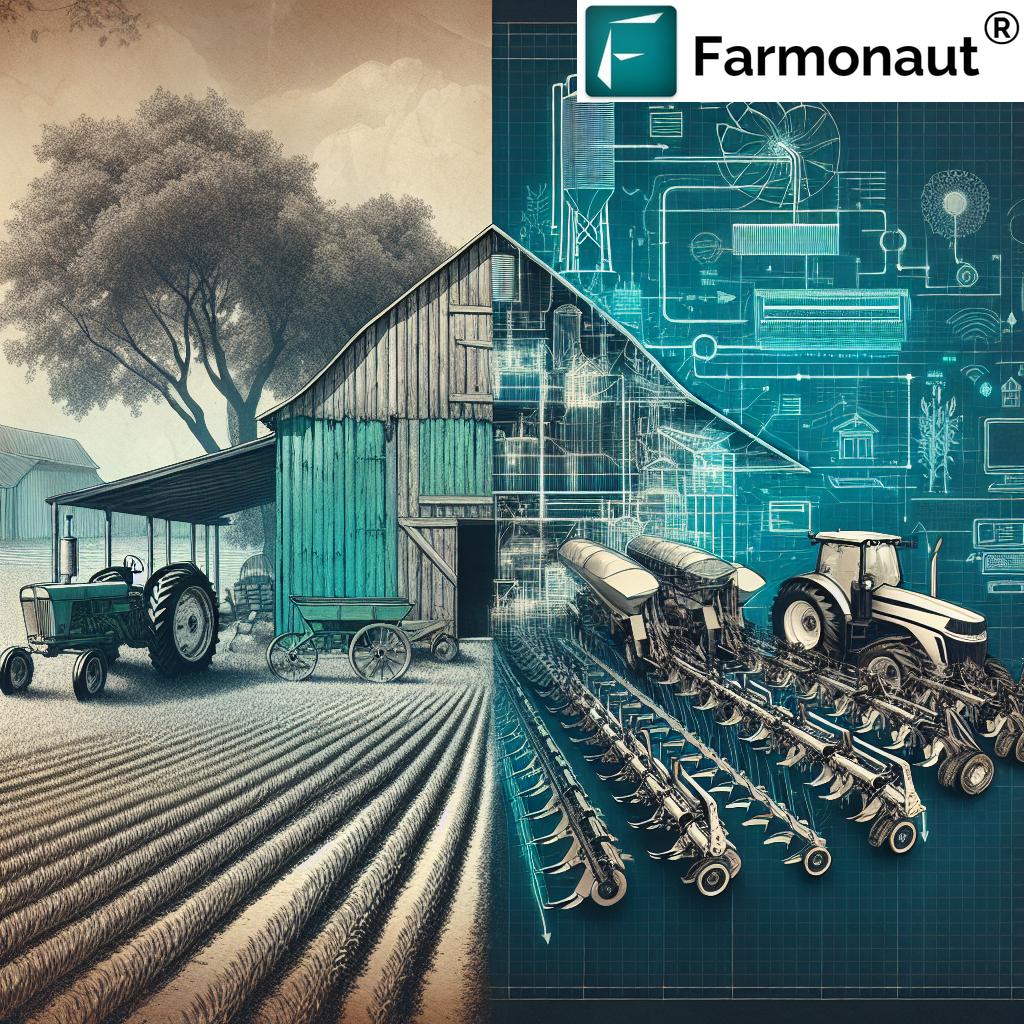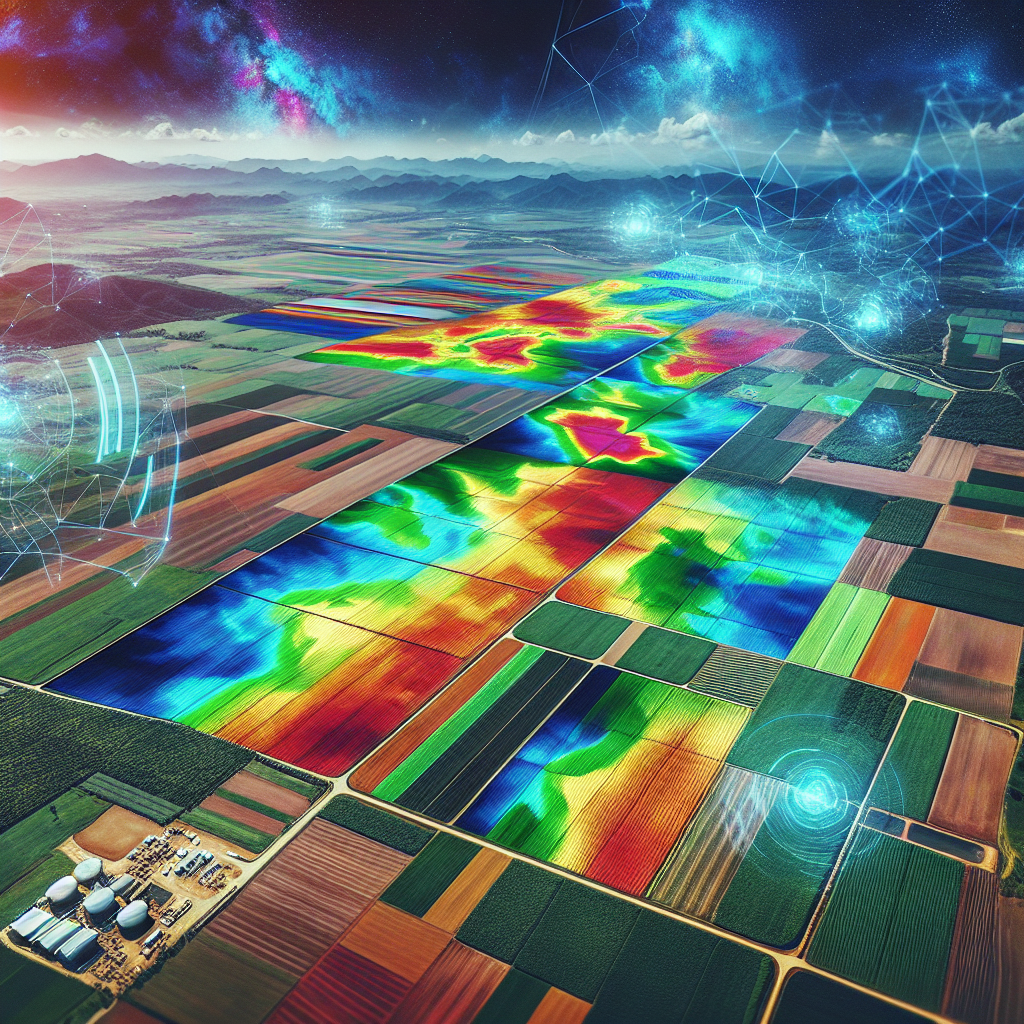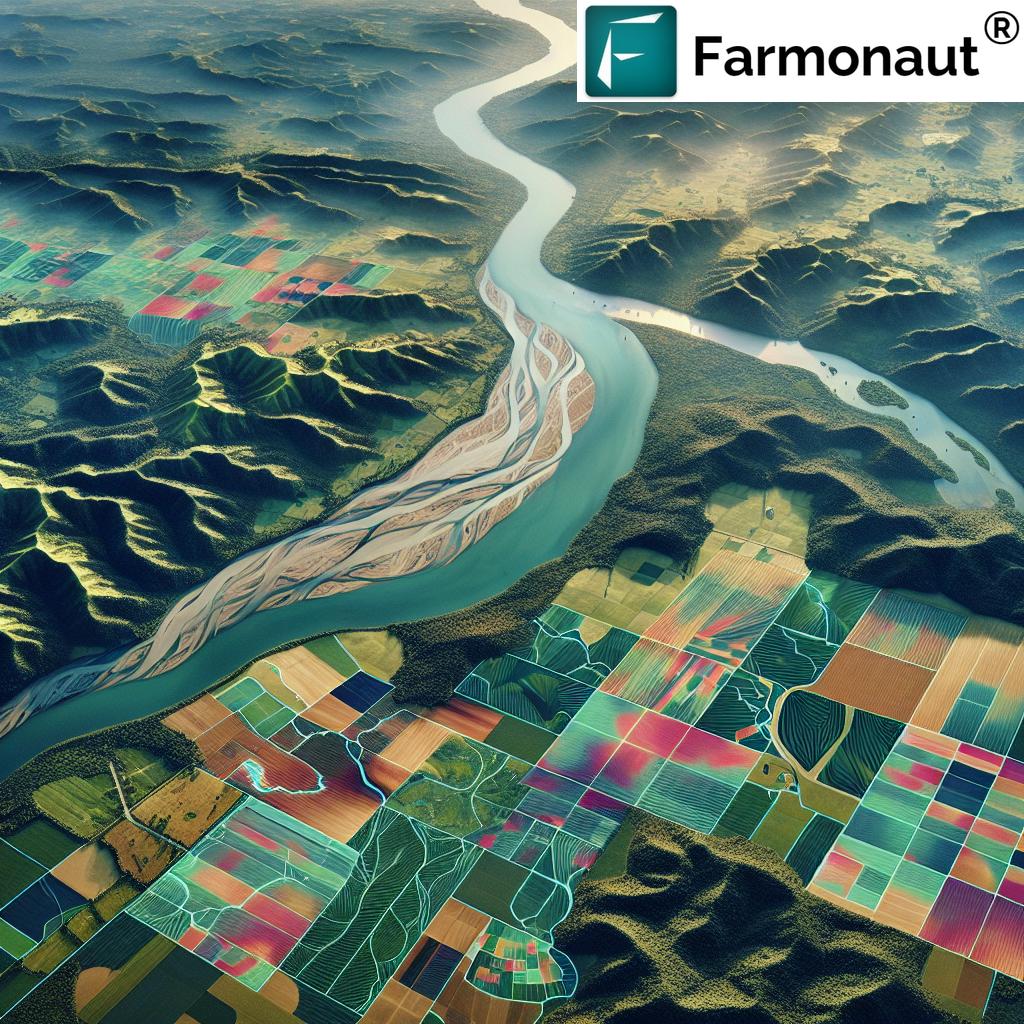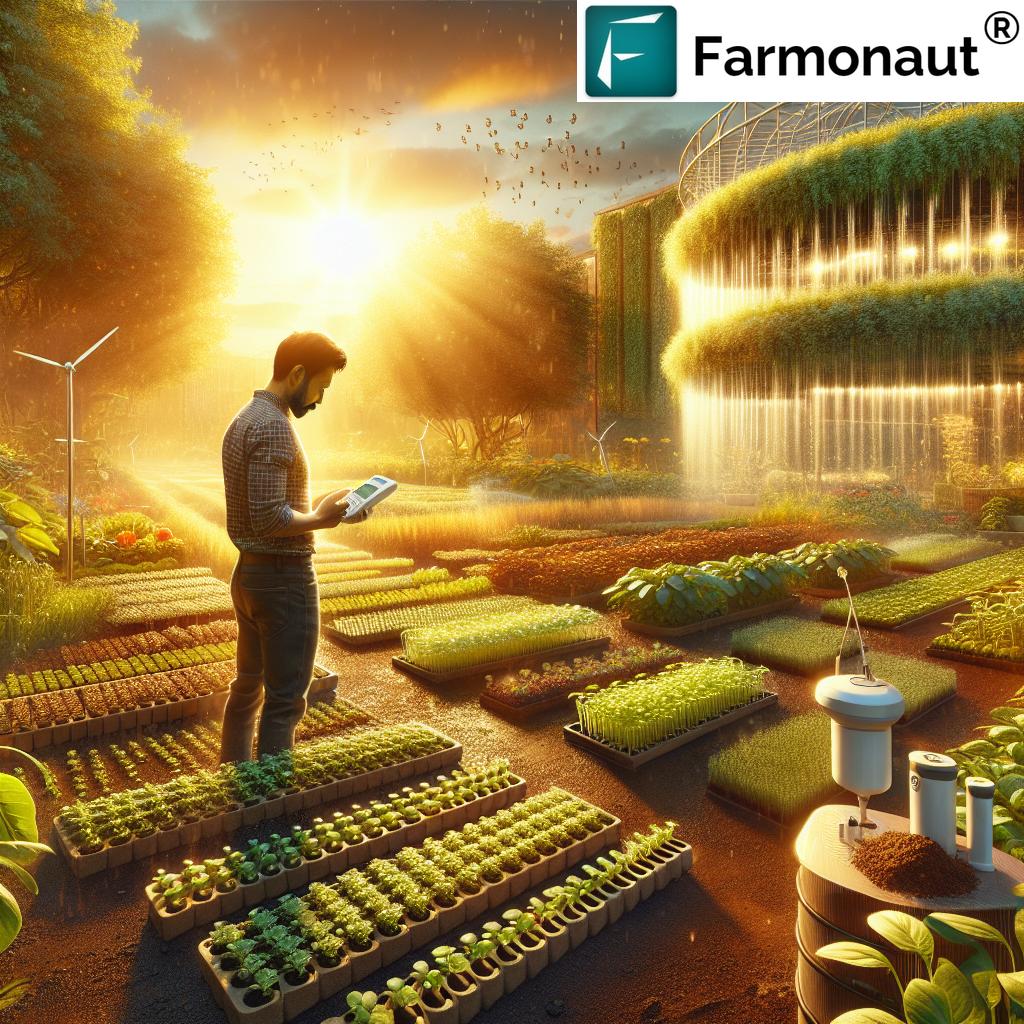Unlock Explosive Growth: Best VPD Range Tips Revealed!
- Introduction: The Power of Vapor Pressure Deficit (VPD)
- Understanding VPD: The Core of Plant Health
- How to Calculate VPD: Formula & Explanation
- VPD and Plant Physiology: Transpiration, Uptake & More
- Optimal VPD for Plant Growth: Ranges, Stages & Outcomes
- Comparison Table: VPD Range vs. Crop Growth Outcomes
- VPD in Controlled Environments: Managing VPD in Greenhouses
- Measuring & Managing VPD: Tech, Monitoring & Farmonaut Tools
- VPD and Climate Change: New Growing Challenges
- VPD and Wildfire Risk: A Hidden Environmental Driver
- Innovating Farming with Farmonaut: Satellite Data for Better VPD Management
- Frequently Asked Questions (FAQ) about VPD
- Conclusion: Your Path to Explosive Plant Growth
Introduction: The Power of Vapor Pressure Deficit (VPD)
When it comes to giving our plants an explosive boost in growth, controlling environmental factors is paramount. Among these, Vapor Pressure Deficit (VPD) stands out as a fundamental concept in plant physiology and environmental science. By understanding and optimizing VPD, we can significantly improve plant health, yield, and disease resistance, whether growing in open fields, greenhouses, or any controlled environments.
So, what exactly is VPD? It’s more than a technical metric—it’s the vital link between air temperature, humidity, moisture levels, and plant water use. In this blog, we’ll unlock how VPD influences key processes like transpiration, uptake, and growth. We’ll also dive into actionable tips, technological solutions, and how innovative platforms like Farmonaut empower us with real-time crop health monitoring to make science-backed decisions for healthier, more resilient crops.
Understanding VPD: The Core of Plant Health
Vapor Pressure Deficit (VPD) is the difference between the maximum amount of vapor the air can hold (when saturated) and the current vapor pressure (how much water is in the air). In other words, it measures the dryness of the air—a crucial indicator for plant growth and transpiration rates. High VPD means the air can absorb more water from plant leaves, which directly influences how much water the plant loses during respiration.
- Saturated Vapor Pressure (SVP): The pressure exerted by water vapor in a fully saturated atmosphere (saturation point for air at a specific temperature).
- Actual Vapor Pressure (AVP): The pressure exerted by the current amount of water vapor in the air.
- VPD = SVP – AVP
The interaction between temperature and humidity affects these values—and thus, the VPD. As temperature increases, so does the air’s capacity to hold moisture, raising the SVP. If relative humidity remains constant, the VPD will still climb as the air warms, leading to faster water loss from plants.
By monitoring and adjusting VPD, we create conditions conducive to healthy plant growth, reduce the risk of diseases, and optimize nutrient uptake and use efficiency.
How to Calculate VPD: Formula & Explanation
Calculating VPD may seem complex, but it’s a fundamental concept that’s essential for any grower serious about boosting yields and plant health. Let’s break down the core formula:
VPD Formula:
VPD = Saturation Vapor Pressure (SVP) - Actual Vapor Pressure (AVP)
- SVP is dictated by temperature—the warmer the air, the higher its SVP.
- AVP is determined by how much water vapor is currently in the air (relative humidity).
Example:
At 20°C and 50% relative humidity:
SVP = 2.34 kPa
AVP = 1.17 kPa
VPD = 2.34 – 1.17 = 1.17 kPa
At 30°C and 50% relative humidity:
SVP increases to 4.7 kPa
AVP = 2.35 kPa
VPD = 4.7 – 2.35 = 2.35 kPa
If you want to automate this calculation on your farms, you can leverage digital tools. The Farmonaut Web App and API (API Link) offer seamless integration, granting real-time data for SVP/AVP, temperature, and relative humidity levels, so growers never have to guess their deficit values again.
Learn more about developer integrations:
Farmonaut Satellite & Weather API Documentation
VPD and Plant Physiology: Transpiration, Uptake & More
VPD directly influences several vital processes in plant biology:
- Transpiration: The process by which water is absorbed by roots, transported through the plant, and evaporated from aerial parts like leaves.
- Nutrient Uptake: Efficient transpiration enhances nutrient transport from soil to plant tissues, improving overall growth.
- Leaf Cooling: As water vapor leaves the plant, it dissipates heat, helping to maintain optimal leaf temperature.
- Disease Risk: Both high and low VPD impact disease development. Prolonged leaf wetness due to low VPD fosters fungal infection; high VPD can cause water stress and make plants more susceptible to physiological disorders.
Too high VPD (e.g., above 1.6 kPa):
- Leads to excessive transpiration
- Plants lose water faster than roots can absorb, resulting in stress, stunted growth, leaf wilting, and tip burn
- Soil moisture becomes insufficient to keep up
- Overall plant health and growth is compromised
Too low VPD (e.g., below 0.8 kPa):
- Air is near saturation
- Transpiration rate is reduced
- Inadequate transport of water and nutrients, leading to weak, leggy, or pale plants
- Creates a microenvironment conducive to fungal diseases due to prolonged leaf wetness
Maintaining the right VPD is essential for keeping plants strong, healthy, and productive through all growth stages.
Optimal VPD for Plant Growth: Ranges, Stages & Outcomes
Our plants thrive within an optimal VPD range. But what values should we actually aim for? The right target can vary among species and between vegetative, propagation, and flowering stages. Here’s a practical guideline for healthy crops:
- Propagation/Seedlings: Aim for 0.3 – 0.5 kPa.
This lower VPD prevents desiccation and supports delicate, newly-rooted plants. - Vegetative Stage: Target 0.8 – 1.0 kPa.
Encourages robust transpiration and nutrition without excess water loss. - Flowering/Fruiting Stage: Slightly higher, 1.2 – 1.5 kPa.
Increases transpiration for nutrient delivery, improving yields and quality.
These recommendations are based on scientific studies and validated in written resources. You can monitor your VPD using reliable weather stations or digitally via crop health platforms like Farmonaut. Automated systems take care of data integration, giving clear, actionable insights.
Comparison Table: VPD Range vs. Crop Growth Outcomes
VPD in Controlled Environments: Managing VPD in Greenhouses
Managing VPD is critical in greenhouse settings and other controlled environments. Unlike the open field, we have the power to adjust air temperature and humidity using HVAC (heating, ventilation, and air conditioning) systems.
Here’s how we can leverage VPD knowledge in these environments:
- Propagation (Young Plants): Maintain a lower VPD (0.3–0.7 kPa) to help prevent desiccation, keeping seedlings hydrated and stress-free.
- Vegetative Growth: Increase VPD to 0.8–1.2 kPa as roots and leaves strengthen; this range is optimal for plant growth at this stage.
- Flowering/Maturity: Adjust VPD up to 1.2–1.5 kPa for improved yields and to reduce risk of fungal disease.
- Automated Monitoring: Use sensors and digital tools to track VPD and make adjustments quickly. Technologies, such as those offered by Farmonaut, automatically integrate with weather and crop health data, giving growers precise VPD values in real time.
In these high-precision settings, monitoring VPD is a daily practice—not a one-off task. The benefits: Reducing disease risk, enhancing nutrient uptake, and achieving consistent, high-quality harvests.
Need more advanced solutions for large-scale management? Check out Farmonaut’s Large Scale Farm Management Tools, which combine multi-hectare monitoring, real-time alerts, and actionable insights—perfect for large greenhouses and plantations.
Measuring & Managing VPD: Tech, Monitoring & Farmonaut Tools
To fully realize the benefits of VPD optimization, we must reliably measure temperature and relative humidity, as well as monitor crop responses. Here are the top methods and tools:
-
VPD Meters & Probes:
Handheld devices provide direct readings of temperature, relative humidity, and VPD for quick spot checks. -
Integrated Systems:
Automated HVAC and sensor packages can continuously monitor and adjust temperature and humidity, ensuring VPD remains within target ranges. -
Satellite & AI-Based Monitoring:
This is where Farmonaut comes in—we utilize multispectral satellite imagery and AI analytics to track:- Field-scale temperature and humidity fluctuations
- Crop health indices (e.g., NDVI – Normalized Difference Vegetation Index)
- Soil moisture and atmospheric conditions impacting VPD
Growers can receive real-time alerts, AI-driven advisory, and trend reports, allowing for precise intervention—reducing dependence on guesswork and maximizing both efficiency and sustainability.
To streamline logistics and input/output management further, Farmonaut’s Fleet Management Tools help ensure timely delivery of water, nutrients, and equipment for scalable VPD management, especially valuable for large agribusinesses and supply chains.
For growers looking to maximize transparency, Farmonaut’s Blockchain-Based Product Traceability adds secure, transparent tracking to every step—from field preparation, through precise VPD management, to harvest and final product delivery.
VPD and Climate Change: New Growing Challenges
Modern agriculture faces new, evolving challenges due to climate change. Globally, rising mean temperatures are causing VPD levels to increase ([source](https://www.science.org/doi/full/10.1126/sciadv.aax1396?utm_source=openai)). This trend drives higher atmospheric water demand, increasing evaporation and transpiration rates across many regions—and for many crops.
-
Impeded Vegetation Growth:
As VPD climbs, plants experience water stress more readily, especially during critical stages of development. This can reduce yields and food security in the long run. -
Increased Water Use:
Farmers must monitor both soil and atmospheric moisture carefully, as crops may require more irrigation. -
Enhanced Disease Risk:
Unpredictable swings between high and low humidity create microenvironments conducive to the spread of fungal and bacterial diseases.
How can we adapt? Real-time data from services like Farmonaut’s Carbon Footprinting Platform help us track and reduce emissions, manage resources, and respond rapidly to changing climate conditions, making it easier to implement sustainable, climate-smart agriculture.
VPD and Wildfire Risk: A Hidden Environmental Driver
One often-overlooked impact of high VPD levels is their contribution to wildfire risk. In regions like the western United States, elevated VPD correlates strongly with periods of high wildfire activity ([source](https://journals.ametsoc.org/view/journals/apme/54/6/jamc-d-14-0321.1.xml?utm_source=openai)). Here’s why:
- Drier Air, Drier Vegetation: When VPD rises, it means the air pulls more moisture out of leaves, stems, and the soil itself.
- Increased Risk of Ignition: Vegetation becomes hotter and more flammable, so even minor sparks can lead to catastrophic wildfires.
- Monitoring is Crucial: By monitoring VPD in real time, land managers and foresters can better anticipate periods of elevated risk and adjust resource allocation, irrigation, or fire prevention strategies accordingly.
Digital farm management systems—like Farmonaut’s crop & vegetation health monitoring platform—offer a bird’s-eye view of at-risk landscapes, allowing users to integrate these environmental triggers into their risk management and response plans.
Innovating Farming with Farmonaut: Satellite Data for Better VPD Management
Technology is revolutionizing how we manage VPD, plant health, and sustainability:
- Farmonaut’s satellite-based monitoring offers unprecedented insights into crop health, soil moisture, and environmental stressors. Growers receive early warnings about drought, waterlogging, or humidity spikes—all vital factors in VPD control.
-
Jeevn AI Advisory System:
Personalized insights help us diagnose stress symptoms, optimize irrigation/fertility scheduling, and target the exact VPD needs of different crops and stages. -
Blockchain Traceability:
The traceability platform enables every grower and buyer to verify a product’s journey—ensuring that VPD and other environmental controls have been effectively managed. -
Fleet & Resource Management:
For plantation operators and agribusiness, Farmonaut’s fleet management solution optimizes resource use (irrigation, fertilizers), improving labor efficiency and cutting fuel costs as well—a perfect fit for VPD-focused strategies.
Ready to harness explosive growth by mastering VPD? With Farmonaut, every farm—no matter its size—can use advanced technology to stay ahead, maximize yields, minimize environmental impact, and future-proof operations against climate uncertainty.
Take the first step:
Try the Farmonaut App for free and experience next-level precision farming for yourself!
Frequently Asked Questions (FAQ) about VPD
-
What is Vapor Pressure Deficit (VPD), and why is it important for plant growth?
VPD represents the difference between the air’s current vapor content and its maximum holding capacity at saturation. It’s crucial because it dictates plant water loss, nutrient uptake, and risk of diseases. Optimal VPD levels help maintain plant health, maximize yields, and reduce losses from water stress or pathogens.
-
How can I calculate VPD on my farm?
Use the formula: VPD = SVP (determined by air temperature) – AVP (calculated from relative humidity). Tools like the Farmonaut App automate this using satellite and weather data for effortless VPD tracking.
-
What are the ideal VPD ranges for different plant stages?
Propagation: 0.3–0.5 kPa
Vegetative: 0.8–1.0 kPa
Flowering: 1.2–1.5 kPa
These ranges support healthy root development, strong growth, and outstanding yields. -
How does high VPD impact wildfire risk?
High VPD dries out vegetation, making it more susceptible to ignition and spread of wildfires. Regular monitoring helps land managers anticipate and mitigate these risks.
-
Can I automate VPD management on my farm?
Yes. Integrated Farmonaut solutions combine real-time data from satellites and AI to deliver precise VPD readings, alongside crop health analytics, for fully automated, data-driven farm management.
-
Where can I learn more about tech solutions for sustainable, climate-resilient agriculture?
Visit the Farmonaut Carbon Footprinting Platform to discover how to reduce your farm’s environmental impact while optimizing productivity.
Conclusion: Your Path to Explosive Plant Growth
Optimizing Vapor Pressure Deficit (VPD) is a game-changer for every grower—whether you manage a greenhouse, vast open fields, or plantation forests. Understanding the interactions between temperature, air moisture, and plant physiology unlocks new levels of growth, resilience, and profitability.
By integrating scientific VPD management strategies and leveraging advanced technologies—like Farmonaut’s real-time crop health, resource, and environmental monitoring tools—we can confidently navigate ever-changing conditions, reduce disease risk, and create thriving, sustainable agricultural systems.
Embrace the future now. Use data, use innovation, use precision agriculture powered by Farmonaut—and unlock explosive growth season after season!




